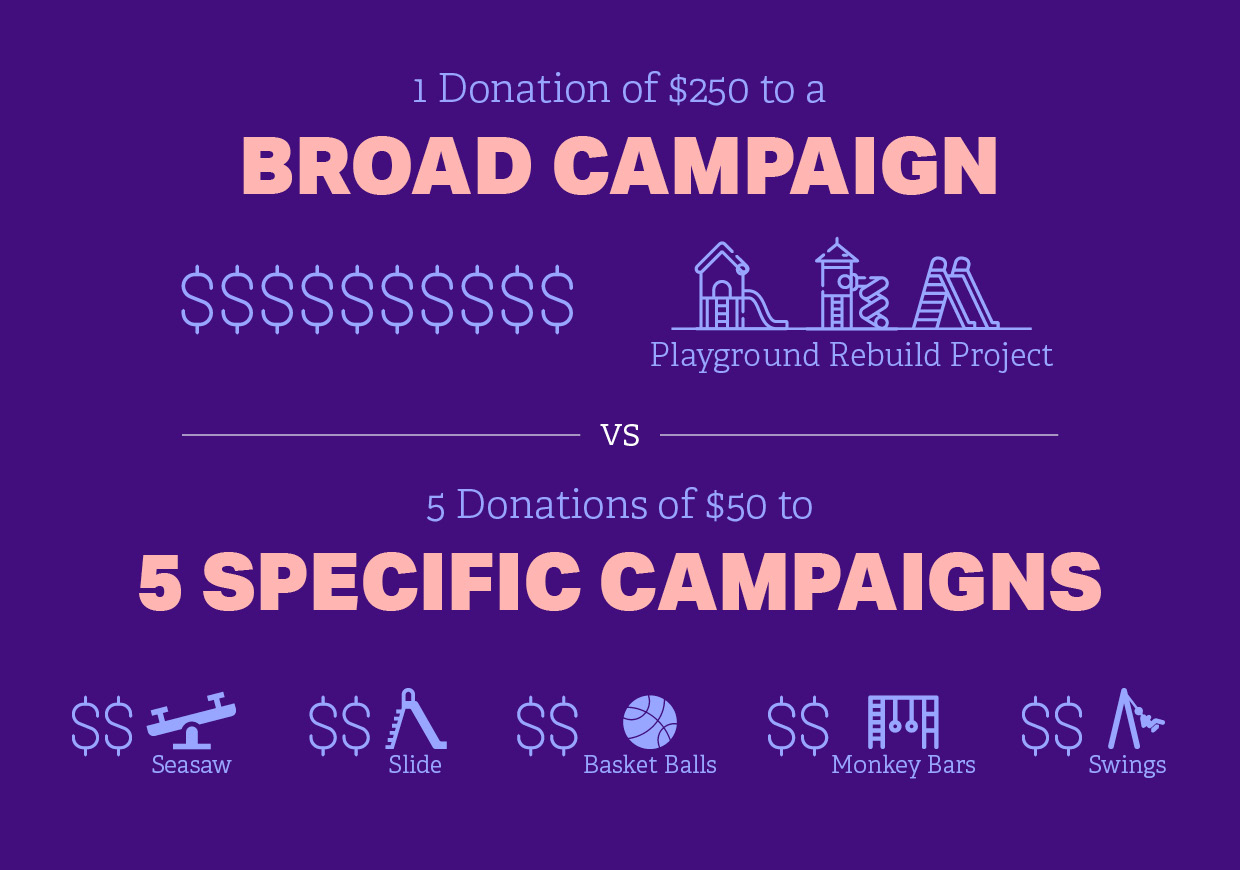There are different schools of thought on donor fatigue, particularly when it comes to finding strategies that fit your nonprofit organization’s needs and addressing the unique aspects of crowdfunding. Simply put, it’s not about how often you ask, but how often you’re interacting with donors and providing updates on the gift they made after your last ask.
A crowdfunding campaign is typically a small part of your overall fundraising budget, making some nonprofits feel reluctant to ask their donors to keep giving. However, it isn’t the frequency of the ask that signals donor fatigue. Rather, it comes from asking supporters to give again when they have not been told about how their last donation was used to advance the organization’s purpose. To maintain positive donor relationships, there should be some level of engagement between asks like telling the donor what was done with past donations.
You don’t need to feel limited to hard and fast rules to asking for donations. For example, some nonprofit organizations follow specific asking guidelines like “don’t ask again for two months” or “don’t ask more than five times in a year.” Contrary to these common rules, as long as you close the loop on the last ask, the new one most likely will be received positively. Most donors would prefer to make small donations to very targeted campaigns rather than make a larger donation to something more general, as it gives them a sense of transparency into how their donation is spent.
Example: Playground rebuild project
Let’s take a look at an example of how your nonprofit organization might tackle a crowdfunding opportunity while minimizing donor fatigue. In this example, your nonprofit organization is raising money to rebuild an old community playground so children in the community have a safe place to play. You have two options when it comes to how you will raise the funds you need to complete the project:
- Option A: Requesting one donation of $250 to a broad “Playground Rebuild Project” campaign from each supporter. When donors make this contribution, their funds could go toward any part of the project and it is less clear when their specific contribution will be brought to fruition.
- Option B: Soliciting five donations of $50 each to five very specific campaigns for the same nonprofit over a longer timeframe. These donations go towards specific elements of the rebuild like the seesaw, slide, basketballs, monkey bars, and swings.

Because donors have specific insights into how the donation was used in Option B, they are most likely to understand that immediate impact, minimizing donor fatigue. While your nonprofit organization did make more fundraising asks using this option, the amount requested being lower and donors knowing what their gifts accomplished and when makes them feel like a valuable, integral part of the campaign. Crowdfunding may not always follow the conventional rules for nonprofit giving, so make sure you’re adjusting your fundraising and solicitation strategies accordingly.
So, why does it matter how often they donate if it’s the same amount? As you know, donor retention is a critical part of your fundraising strategy. Keeping donors engaged and excited about the specific ways their contributions benefit your organization will boost your retention rate and lead to more donations in the future.
When crowdfunding, your nonprofit organization should adjust its way of thinking from “don’t ask too many times” to “ask often, but show the impact of gift between asks.” This strategy will increase the number of successful campaigns and help smaller, more targeted campaigns be even more successful. Keep this method in mind during your next crowdfunding campaign to maximize revenue and make your solicitation strategy as effective as possible.




